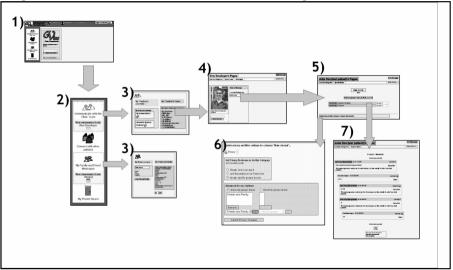Abstract
Communication surrounding cancer treatment involves clinicians, patients, families, friends and others affected by the illness. The aim of this work is to create an informatics system that can support the communication needs of cancer patients and their formal and informal caregivers. Based on interviews with patients and family/friend caregivers, a prototype web-based communication system was created with an emphasis on the interpersonal relationships between patients, families, and clinicians.
INTRODUCTION
As web-based patient portals become ubiquitous among health care providers, it will become more important to design these systems to integrate into the daily lives of cancer patients and their families. Clinical and supportive cancer care occurs in both medical and social relationships. Tools that facilitate online communication between these relationships might better match the holistic nature of the corresponding face-to-face interactions.
METHODS
Semi-structured interviews were conducted with 16 cancer patients and 9 family/friend caregivers. The responses were coded into concept nodes using a modified grounded theory methodology. Five types of clinical and supportive relationships were identified: clinical, explicit supportive, implicit supportive, private-open, and holistic relationships. The interface design for a prototype system was developed from these relationships using a relationship-centric design for online cancer communication.1
RESULTS
1. Login screen
Includes links for the Relationship Portal, user settings, and updating the personal profile.
2. Relationship Portal
The patient’s relationships are emphasized in a single interface with links to the clinic, other patients, family/friends, and a private space; messages are initiated and viewed in the context of each relationship.
3. Clinic contact list; Family/Friend list
Patients can connect with their clinicians and can invite and organize family and friends for explicitly sharing information with individuals or custom groups.
4. Personal home page
The relationships between the users are highlighted through personal photos/profiles and message histories. This personal connection goes beyond typical e-mail messaging where “you just type in and send it.”
5. Listing of journal entries
Previous entries under each journal category are archived and listed by date.
6. Privacy options
Patients can limit their personal journal categories to a specific group or set of groups. For example, some patients might choose to tell their children more pertinent details and share other information more generally.
7. Threaded entries and replies; list of viewers
The original message and the public and private replies are displayed hierarchically as a thread; the presence of visitors is conveyed to the patient through the names of family/friends who viewed the page.
DISCUSSION
This design emphasizes the relationships between users and presents messages in the context of these clinical and supportive relationships. The goal is for the online communication to integrate with and facilitate the patients’ and families’ real-world relationships during cancer care.
Figure 1.
Flow of the interface design.
Footnotes
This work was supported by NLM T15 007450-03
REFERENCES
- 1.Weiss JB, Lorenzi NM. Online Communication and Support for Cancer Patients: A Relationship-centric Design Framework. AMIA Annu Symp Proc. 2005:779–803. [PMC free article] [PubMed] [Google Scholar]



